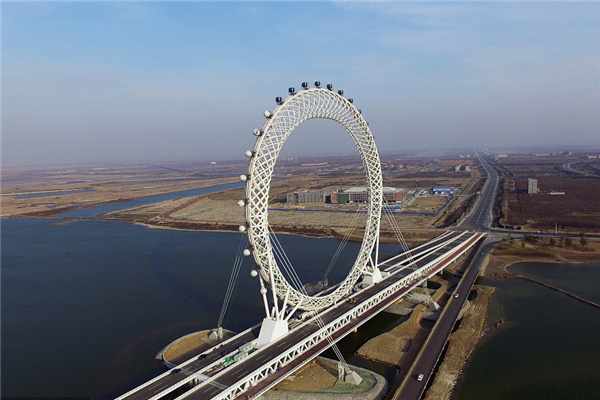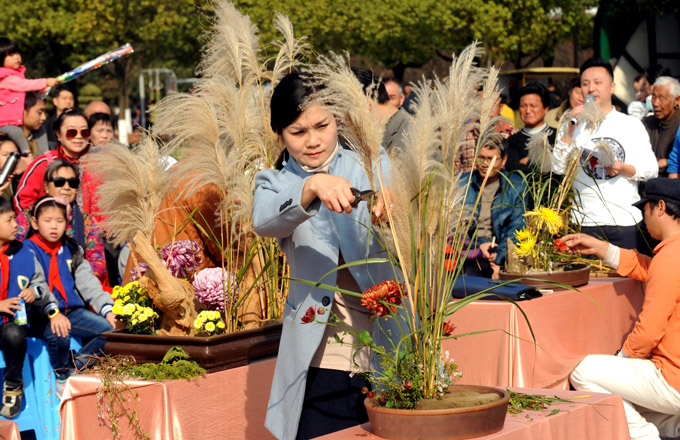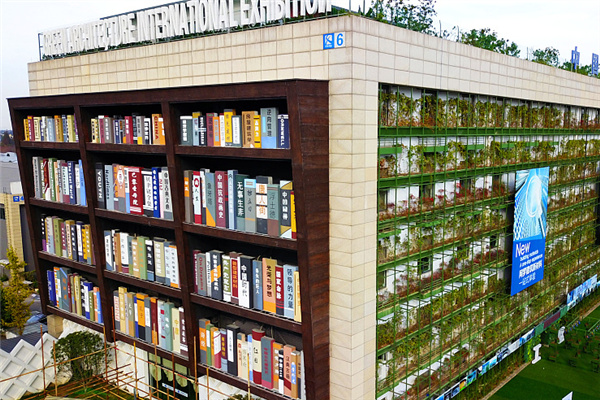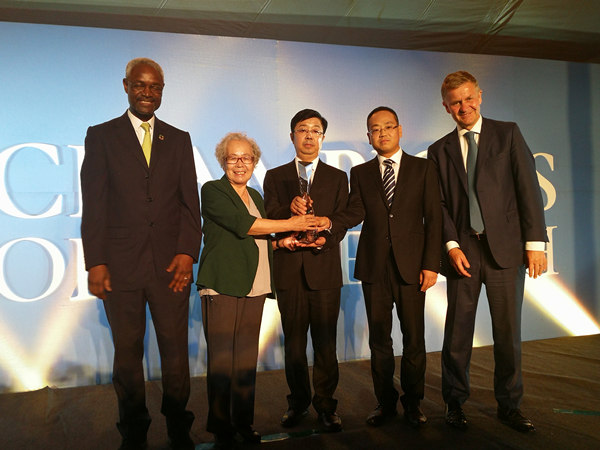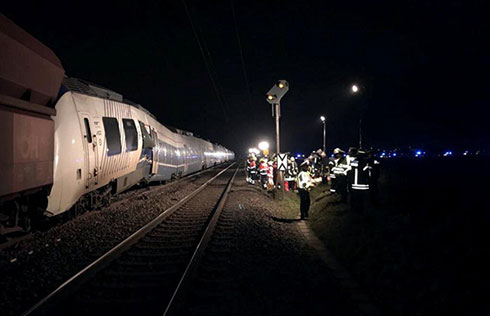

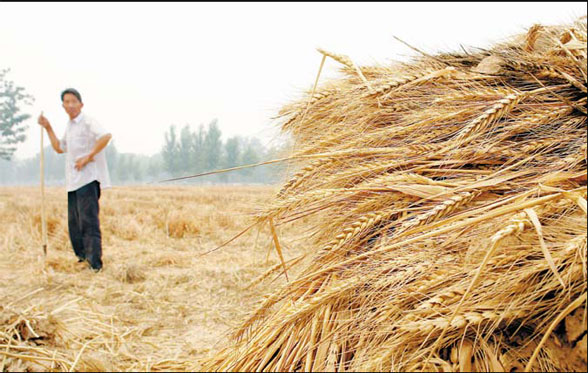
Strong and new forces of change in the world food equation are transforming food consumption, production, and markets.
On the demand side it is high income growth, change of peoples' consumption preferences with urbanization, and subsidized biofuel production; on the supply side it is too slow-growing productivity, low stocks, weather induced supply shocks, and climate change; these forces add up to global agriculture imbalances and have led to drastic agricultural price increases.
The rise in cereal prices has indeed been dramatic. Since the beginning of 2000, the price of wheat increased more than three-fold, while the prices of corn and rice more than doubled. When adjusted for US dollar depreciation, the price increases are lower, but still drastic. The global surge in food prices has been translated at the national level. In China, year-on-year inflation in January 2008 rose by 7.1 percent, reaching a record high in 11 years. Food price inflation now contributes to about 85 percent of overall inflation, compared to less than 50 percent in 2005-2006. The high global agricultural prices do not appear likely to fall soon. Our global scenario analysis suggests that real world prices for cereals and meat will continue to increase. Rice, wheat, and maize prices will increase by about 20 percent by 2015 beyond current high levels. Beef, pork, and poultry prices are projected to grow by up to 10 percent in the next decade.
The global system of agriculture today is very much driven by the demand side. With income growth, globalization, and urbanization, demand for agricultural products will continue to grow and shift towards high-value commodities. IFPRI's projections until 2015 show that global cereal demand will increase across all regions up to 20 percent. By 2050, demand will increase by more than one-third in East Asia and the Pacific and three-fold in Sub-Saharan Africa. In China, most of the demand for cereals will be driven by animal feed demand, which will double by 2050. On a per capita basis, cereal consumption for rice and maize in China will decline by 18 and 35 percent by 2050. These trends will be accompanied by very strong growth in meat consumption, especially in poultry and beef. Poultry consumption per capita will increase almost three-fold by 2050, and beef consumption - more than two-fold, and milk consumption also increases fast.
Biofuel production has contributed to the changing world food equation and currently adversely affects the poor through price-level and price-volatility effects. Ethanol and biodiesel production, which largely draws on maize and oilseeds, has a strong effect on agricultural prices. My organization's global scenario analysis until 2020 projects that biofuel expansion may result in price increases of 26 percent for maize and 18 percent for oilseeds compared to 2005. In view of concerns about food security, China has adopted modest biofuel expansion plans, compared to others.
Demand for the world's increasingly scarce water supply is rising rapidly, challenging its availability for food production. Agriculture is competing with industrial, household, and environmental uses, and water will be increasingly transferred from irrigation to other uses in relatively dry regions.
Although there are considerable uncertainties regarding the impact of climate change on agriculture, there is a growing consensus that agricultural production globally is likely to be reduced by climate change, with developing countries experiencing the greatest production losses and increased food insecurity. Aggressive policies for climate change mitigation and adaptation can reduce the negative impacts. Nevertheless, the most aggressive mitigation efforts that can be reasonably anticipated cannot be expected to make a significant difference in the short to medium term. This prospect means that climate change adaptation has become an imperative.
In view of the high agricultural demand, rising prices, and emerging challenges, the global production response has been slow. The overall productivity growth in agriculture is simply too low to cope with the fast demand. Total factor productivity - that is, the aggregate productivity, not just yields per unit of land or animals - is about 1.3 percent per annum in most regions and about to 2 percent in China. Its growth is dependent on technological progress.
Between 2000 and 2006, cereal supply increased by mere 8 percent. The production response to high prices is impaired because of land and water constraints and because of neglect in agriculture innovation investments in many countries in past years. Yields grow very slowly in most regions today that have already reached high levels of production in the past. Africa shows actually the highest agricultural growth compared to other world regions, but starting from low levels.
The increase in agricultural prices will have an uneven impact across countries and population groups. Countries that are net exporters -but they are few- benefit from improved terms of trade, while net importers will struggle with meeting domestic food demand or pay high subsidies to shield their consumers from the price increases, like India and Egypt.
Even though China is the largest producer of cereals in the world, it is a net importer and these net imports are projected to rise. Surging agricultural commodity prices and food availability pressures affect the most those who can afford it the least - the poor and food insecure. Poor people spend about 50 to 60 percent of their overall expenditures on food. For a five-person household living on one dollar-a-day, a 50 percent increase in food prices cuts at least $1.50 from their $5-budget and raising energy costs add to their adjustment burden.
Needed policy actions
World agriculture is in a crisis and facing new and historically different challenges. The persistence of poverty in the rural areas of low- and middle-income countries, of high food prices undermining livelihoods, and of deficiencies in the sustainability of agriculture requires large-scale global action. A coordinated global response is needed with new partnerships among old and new players such as the United States, Europe, China, India, Brazil, United Nation agencies, foundations, the private sector and the global research system, that is, the Consultative Group on International Agricultural Research (CGIAR). Four actions are recommended:
Developed countries should facilitate flexible responses to drastic price changes by eliminating trade barriers and programs that set aside agriculture resources, except in well-defined conservation areas. Subsidized biofuel production should be stopped. A world confronted with more scarcity of food needs to open up trade more-not less-to spread opportunities and risks fairly.
Developing countries should rapidly increase investment in rural infrastructure and market institutions in order to reduce agricultural-input access constraints, since these are hindering a stronger production response. Government interventions should be integrated, coordinated, and supported by good governance practices. Also, these countries need to remain open to trade and agricultural knowledge exchange.
Investment in agricultural science and technology by the CGIAR and national research systems would play a key role in facilitating a stronger global production response to the rise in prices. A global R&D initiative for accelerated agriculture productivity makes economic sense, is pro-poor and sustainable, and serves security.
The acute risks facing the poor due to reduced food availability, high prices and limited access to income-generating opportunities require expanded social-protection measures now. Such protection could include employment programs, cash transfer programs, and social security systems targeting the poorest with a focus on enhancing early childhood nutrition programs.
The author is director of the US-based International Food Policy Research Institute and has often contributed to China's agricultural and rural development policies.
The views expressed in the article are his own.
(China Daily 05/19/2008 page3)


